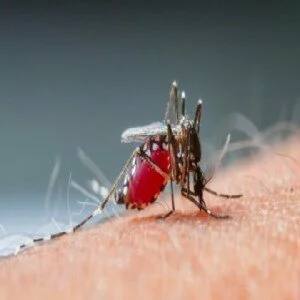Malaria, commonly called “common malaria” is mosquito borne disease caused by a parasite. It is common in several parts of the world where the climate is warm and wet like Nigeria and several other countries in Sub-Saharan Africa and South –East Asia.
There are four types of the same parasite that causes malaria; the worst one can only survive in warm climates but there is one type that can survive in cool temperatures like the southern part of the United States of America and the Southern part of Europe. Thus while the mosquito that can cause malaria is present in developed countries, the parasite has been eliminated by the public health efforts of those countries and the efforts of the individual citizens.
About 220 million infections of malaria occurred globally in 2012 with about 625,000 deaths. Of course, not all cases could have been recorded. It is said that Sub-Saharan Africa accounts for about 90 percent of global infections and deaths.
In Nigeria, Malaria is a very prominent cause of illness and death in infants and children under the age of 5 years. The disease is said to be responsible for about 200,000 deaths annually in the under-five age group in Nigeria, it is also known to cause still births, death of baby in the womb, and death within the first week of life.
Malaria is also a major cause of illness and death of pregnant women directly and indirectly.
The climate of Nigeria favours the spread of malaria, therefore the Government has the biggest role to play in its control. However, we can beat malaria at the individual level by taking necessary measures discussed below.
1. Use of Long Lasting Insecticide Treated Nets
To get malaria, you have to be bitten by a mosquito that has the parasite, as long as you are not bitten by such mosquito, you cannot have malaria.
Sleeping inside” long lasting insecticide treated nets” saves you from
mosquito bites. Part of the activities of “roll back malaria” is the distribution of these treated mosquito nets to individuals, mostly pregnant women.
Please ensure that you get this net and also use it when you get it.
2. Regular Spraying of your home; inside and outside
Regular fumigation of your home reduces the mosquito population in your house, this is called Indoor Residual Spraying. The outside of the building should also be sprayed.
This should be done every three months but it is expensive. The Local Government Council usually has a unit that does the spraying at affordable cost.
No mosquitoes, no malaria.
3. Use of wire meshing on windows and doors.
Wire meshing on windows and doors prevents mosquitoes from entering the house but you could be bitten by them if you went out not properly dressed.
No mosquitoes, no malaria.
4. Use of full-length clothes in the evening/night.
5. Proper Management of your environment
Managing your environment can reduce the number of mosquitoes around you. If allowed, cover the drainages around your home. All possible containers of static water must be removed from the premises, this includes used tyres, broken bottles, tins, and any other materials that can retain water.
This is meant to prevent the growth of mosquitoes.




These ways can impact the spread of malaria by curbing the menace of it in due course.